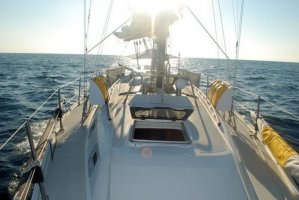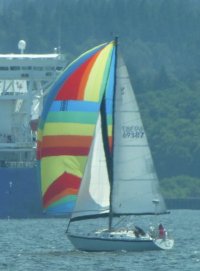To me, Sharonov's choice of mast storage remains tempting. It's just a lot more expensive, and sure--we can live without it. Especially with a CF pole, the windage and weight aloft would not be much of a factor, it's more the expense and additional gear.
It is getting the pole on and off the mast, and manipulating it by hand in a seaway, that is the main issue with poles.
A mast rig means the butt stays on the mast all the time, and a dip-pole jibe is easy, and there is less chance of losing the pole overboard.
I have a Forespar line-control whisker pole, which is a big improvement over the buttons of my former aluminum telescoping pole. Length adjustment is easy and immediate. However, the force on the control line, which alone maintains the length of the pole against compression, is very great.
Carbon fiber poles are light but expensive. Any rubbing on a stay can quickly penetrate the CF. CF has to be painted, or coated, or kept in a bag against UV. I like mine OK, but it's a luxury, like the vertical pole storage system.




